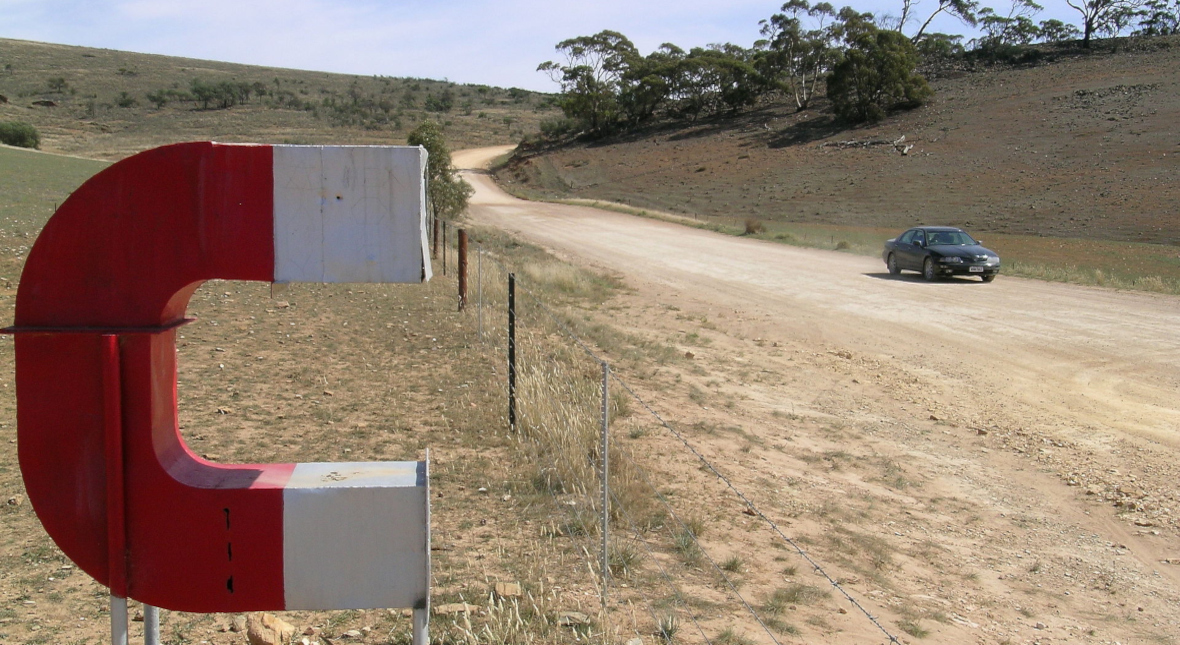Now Reading: The Science Behind Gravity Hills and Their Opposite: When Roads Trick the Eye
-
01
The Science Behind Gravity Hills and Their Opposite: When Roads Trick the Eye
The Science Behind Gravity Hills and Their Opposite: When Roads Trick the Eye

Gravity hills are fascinating optical illusions where a downhill slope appears to be uphill, making objects like cars or water seem to roll “up” the incline. This phenomenon is usually caused by a distorted horizon line, which confuses the brain’s perception of slopes and elevation.
However, the opposite phenomenon—where an uphill road appears flat—can occur in certain conditions. This happens when the surrounding landscape lacks clear reference points, such as trees or buildings, making it difficult for the brain to accurately judge the incline. If the terrain around an uphill road slopes downward significantly, the uphill road itself can appear level or even slightly downhill.
Both effects rely on the brain’s reliance on visual cues to interpret elevation changes, leading to misperceptions that defy expectations.
The Optical Illusions at Play
At the core of gravity hills and their opposite illusion is a powerful optical trick. Our brain relies on various visual cues to determine the orientation of surfaces, but when these cues are misleading, our sense of gravity can be tricked. Several key factors contribute to this misperception:
Horizon Line and Reference Points
One of the main reasons gravity hills and uphill roads appearing flat create illusions is the positioning of the horizon. In many cases, the true horizon is obscured by trees, hills, or other landscape features, leading our brain to rely on alternative reference points. If the surrounding landscape has an unusual tilt—such as trees growing at an angle or sloped land formations—the brain misinterprets the road’s incline. This results in a false sense of elevation, making a downhill slope appear level or even uphill and making an uphill road seem flat.
Lack of a Reliable Vertical Reference
In everyday life, we unconsciously use vertical and horizontal lines—such as buildings, poles, and the horizon—to gauge direction and orientation. In the case of both gravity hills and uphill roads appearing flat, these reliable references are often absent or misleading. Without a clear visual anchor, the brain miscalculates the true incline of the road, reinforcing the illusion that objects are rolling uphill or that an incline is actually level.
The Role of Peripheral Vision
Human perception relies not only on focused vision but also on peripheral cues. When a landscape has a slanted or irregular layout, our peripheral vision can misinterpret the overall gradient of the area. This effect contributes to the illusion, making it seem as though gravity is acting in an unexpected direction.
Scientific Studies on These Phenomena
Researchers have analyzed multiple gravity hills and roads that appear flat around the world using precision instruments such as inclinometers, GPS elevation mapping, and laser leveling devices. These tools confirm that what appears to be an uphill slope is, in fact, a gentle downhill gradient, and what seems flat may actually have an incline.
Studies also show that human perception can be easily manipulated by environmental context. When experiment participants are asked to judge the slope of a surface in controlled conditions, they often overestimate or underestimate inclines based on surrounding visual cues. This further supports the idea that these illusions are the result of cognitive distortions rather than actual gravitational anomalies.
Notable Gravity Hills:
Magnetic Hill, Ladakh, India – A famous spot where cars appear to roll uphill when placed in neutral.
Electric Brae, Scotland – A well-known gravity hill where the landscape creates a powerful illusion of an uphill slope.
Confusion Hill, California, USA – A roadside attraction known for its strong gravitational illusions.
Gansu Magnetic Hill, China – A road where vehicles seem to defy gravity and move upward.
Notable False Flat Locations:
Electric Brae, Scotland – Besides being a gravity hill, some sections of this road also give the illusion that an uphill stretch is flat.
Certain cycling routes in the Alps – Cyclists often experience “false flats” where what appears to be a level road is actually a gentle uphill slope, making it unexpectedly exhausting.
Las Vegas, Nevada, USA – Some roads leading into the city appear flat but are actually uphill, making driving feel deceptively difficult.
People’s reactions
People’s reactions to gravity hills and false flats vary depending on cultural beliefs, scientific awareness, and personal experiences. Some communities explain these illusions through folklore and supernatural beliefs, while others approach them with scientific curiosity.
1. Folklore & Supernatural Interpretations
Many local communities and indigenous tribes associate gravity hills with mystical or supernatural forces. Some common interpretations include:
- Spirits & Ghosts: Some cultures believe that unseen spirits push cars uphill. In places like the Magnetic Hill in Ladakh, India, local folklore suggests that the hill has mystical powers.
- Cursed or Blessed Land: In some regions, locals attribute the illusion to divine intervention or a supernatural curse.
- Magnetic or Paranormal Forces: Some people believe these areas contain magnetic anomalies or supernatural energy fields.
2. Tribal Reactions & Interpretations
Indigenous groups living near these locations often incorporate them into their traditional stories or spiritual beliefs. For example:
- Native American Legends (USA & Canada): Some First Nations and Native American tribes interpret strange natural phenomena, like gravity hills, as places of spiritual significance. Some believe they are sacred sites where ancestors’ spirits interact with the living.
- Nomadic Tribes (Tibet & Mongolia): In areas near gravity hills, nomadic communities sometimes explain the effect as a test by nature or a sign of a hidden force.
- African Tribal Myths: Some communities in Africa, where such illusions exist, may view them as the work of ancestral spirits or deities who influence the land.
3. Modern Scientific Curiosity
- Today, many people react with curiosity and amusement when encountering gravity hills. Visitors often test the illusion by placing cars in neutral, pouring water, or rolling objects to see them “defy gravity.”
- Scientists and skeptics often debunk supernatural explanations and provide clear optical illusion theories.
- Cyclists and long-distance runners, especially in the Alps or Andes, encounter “false flats” that make an uphill road seem deceptively easy, leading to unexpected exhaustion.
4. Tourism & Local Economy
- Some communities turn these locations into tourist attractions, capitalizing on people’s fascination.
- In places like Electric Brae (Scotland) or Magnetic Hill (India), local businesses thrive on tourism, selling souvenirs and offering guided tours.
Conclusion
While gravity hills have sparked legends of magnetic forces and supernatural phenomena, their true explanation lies in the intricacies of human perception. The same principles apply to the opposite phenomenon, where an uphill road appears deceptively flat. These illusions are created by the misleading orientation of the horizon, unreliable vertical references, and the way our brain interprets visual information. These naturally occurring phenomena remind us that what we see is not always an accurate representation of reality. Next time you visit a gravity hill or a seemingly level but challenging uphill road, remember that your eyes—and brain—may be playing tricks on you.


























